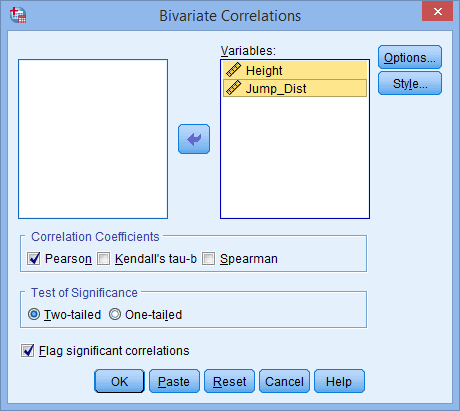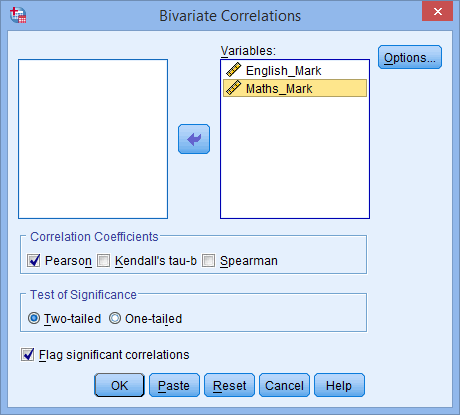
When you choose to analyse your data using Spearman’s correlation, part of the process involves checking to make sure that the data you want to analyse can actually be analysed using a Spearman’s correlation. First, we introduce you to the assumptions that you must consider when carrying out a Spearman’s correlation. We show you the main procedure to carry out a Spearman’s correlation in the Procedure section.
#Spss correlation how to#
This "quick start" guide shows you how to carry out a Spearman’s correlation using SPSS Statistics. Possible alternative tests to Spearman's correlation are Kendall's tau-b or Goodman and Kruskal's gamma.

If you would like some more background information about this test, which does not include instructions for SPSS Statistics, see our more general statistical guide: Spearman's rank-order correlation. For example, you could use a Spearman’s correlation to understand whether there is an association between exam performance and time spent revising whether there is an association between depression and length of unemployment and so forth. The test is used for either ordinal variables or for continuous data that has failed the assumptions necessary for conducting the Pearson's product-moment correlation. It is denoted by the symbol r s (or the Greek letter ρ, pronounced rho).

The Spearman rank-order correlation coefficient (Spearman’s correlation, for short) is a nonparametric measure of the strength and direction of association that exists between two variables measured on at least an ordinal scale.

Spearman's Rank-Order Correlation using SPSS Statistics Introduction


 0 kommentar(er)
0 kommentar(er)
